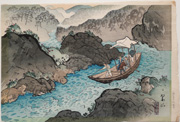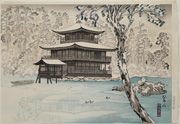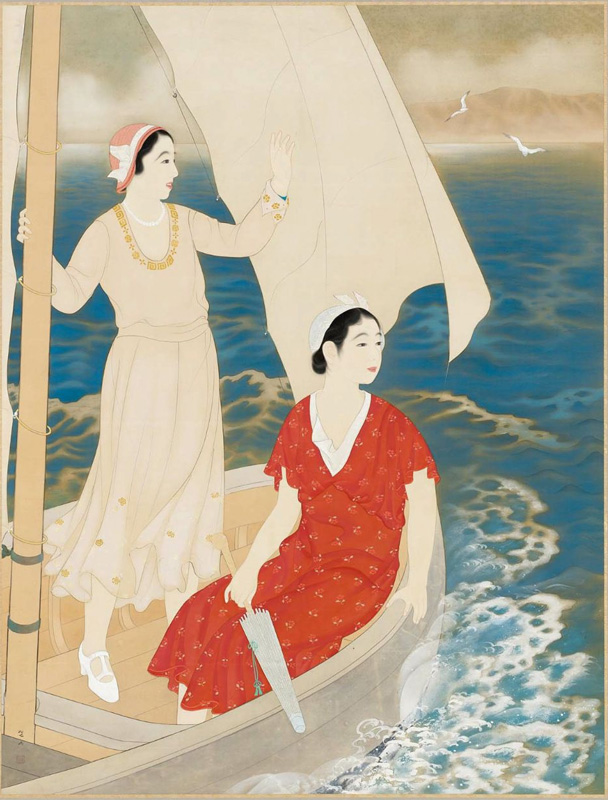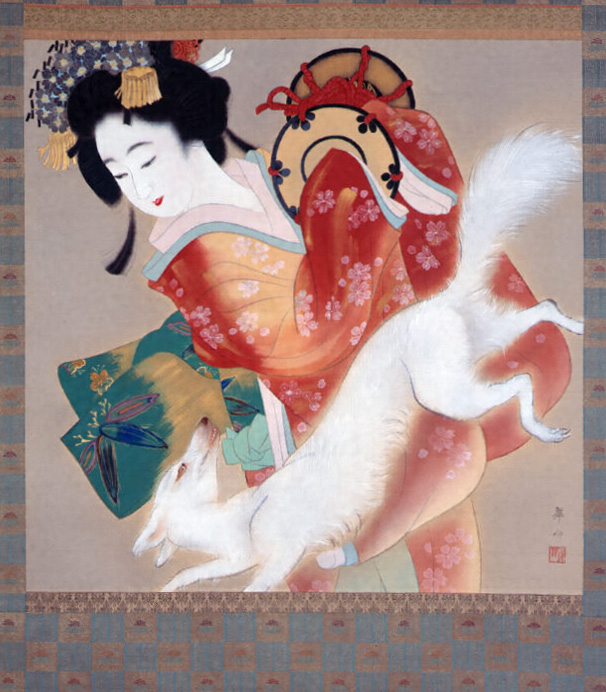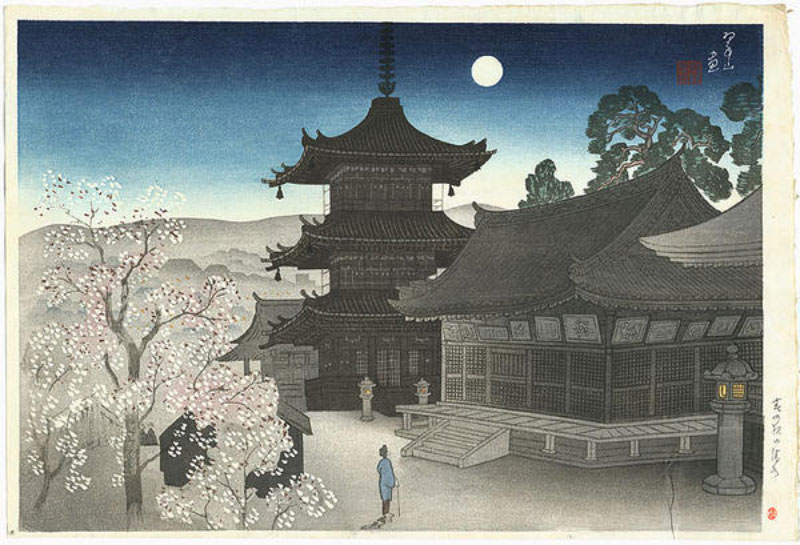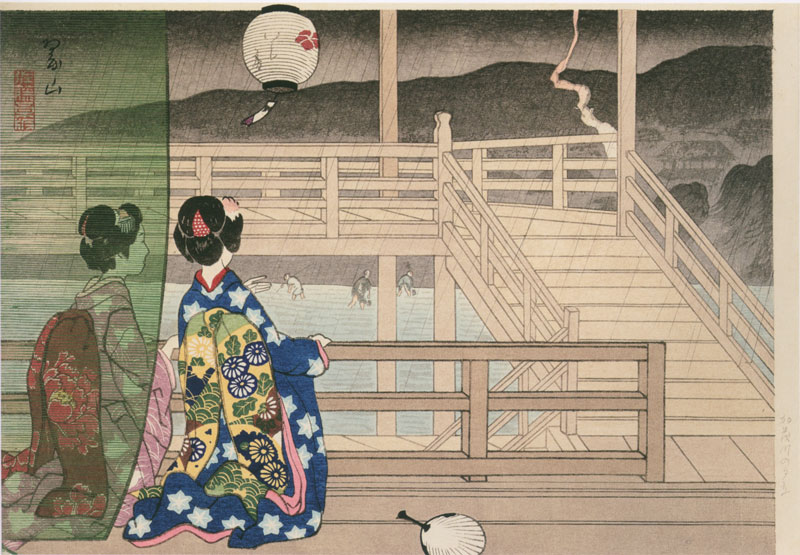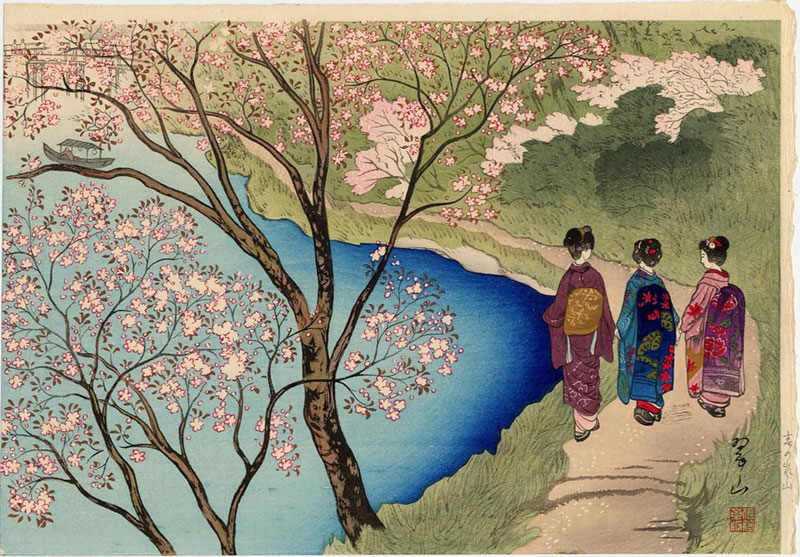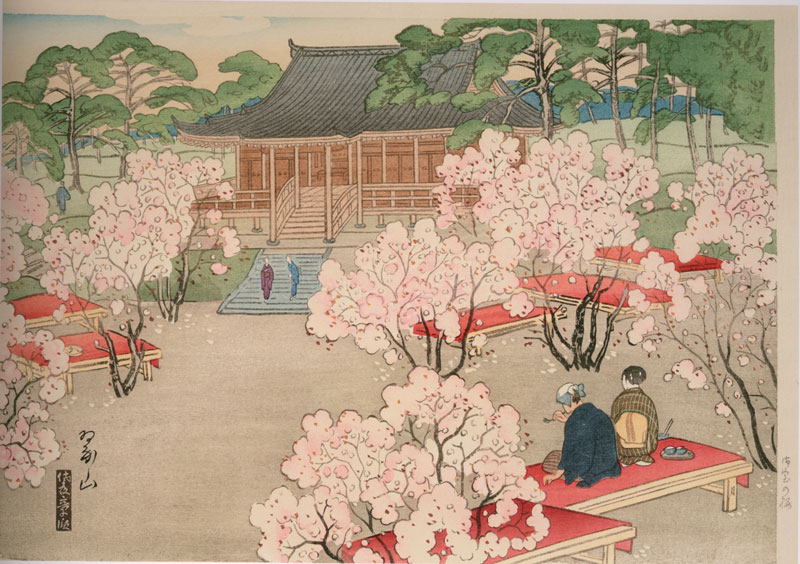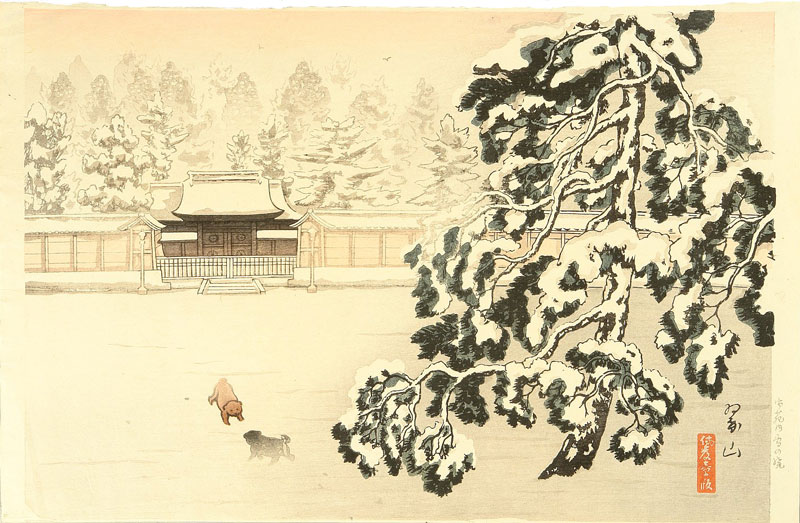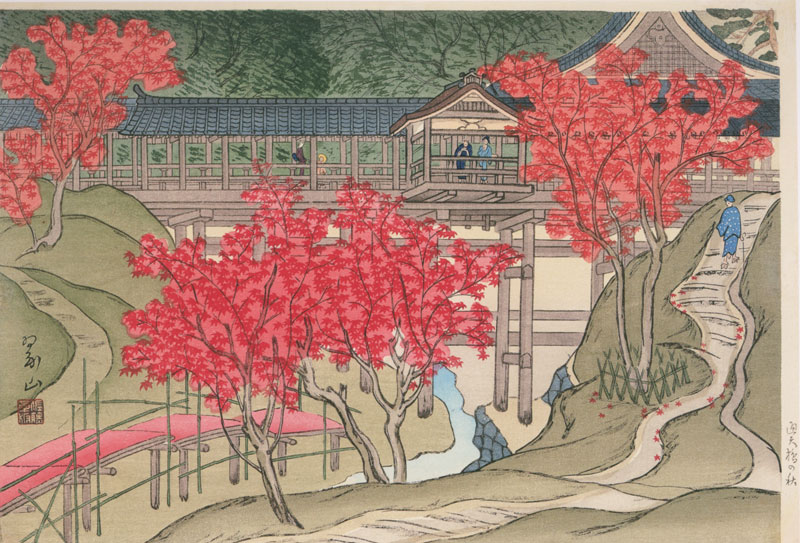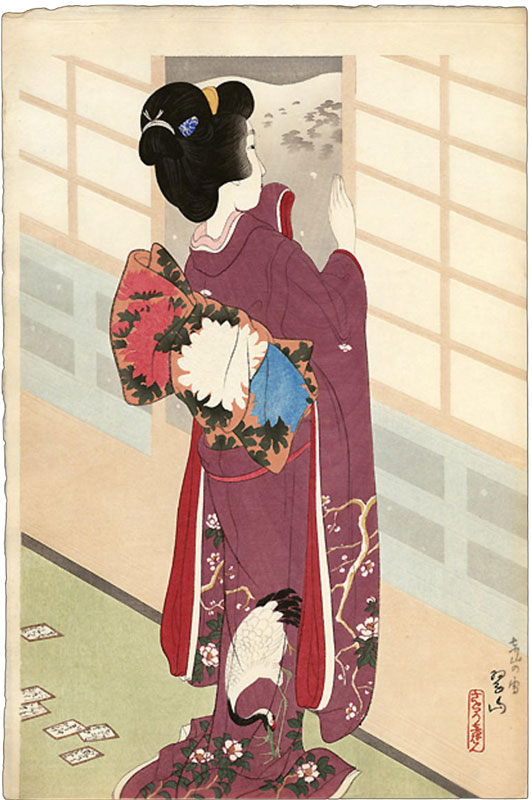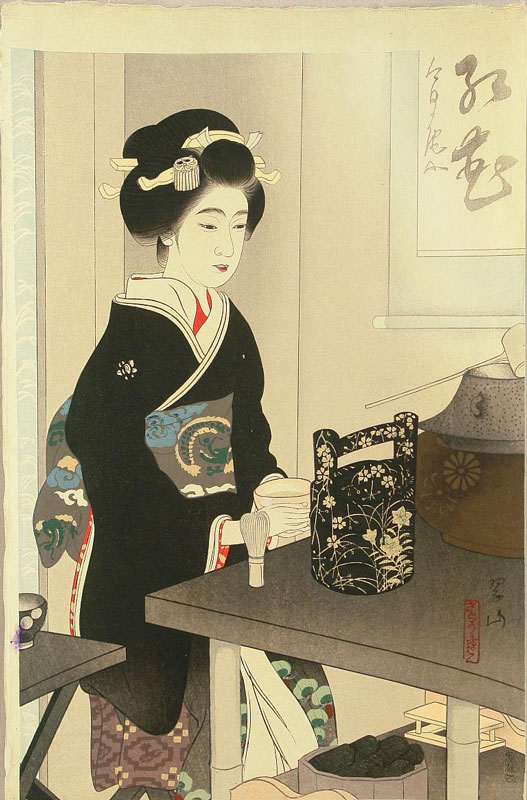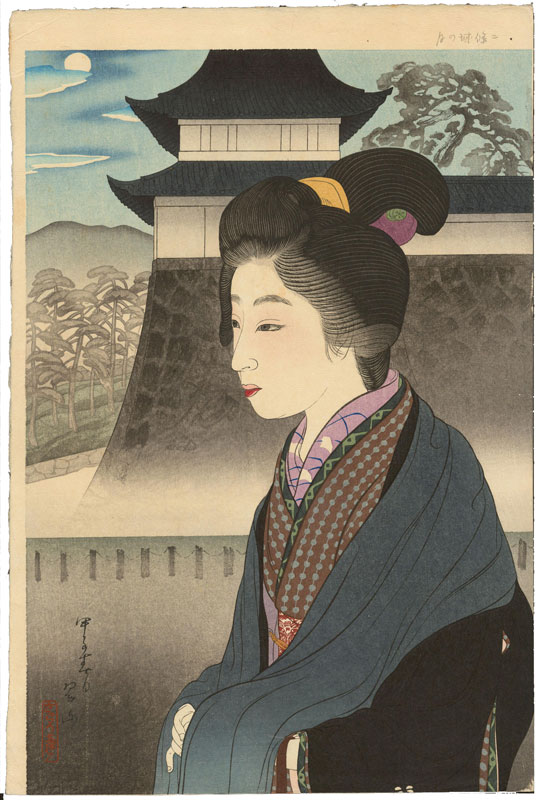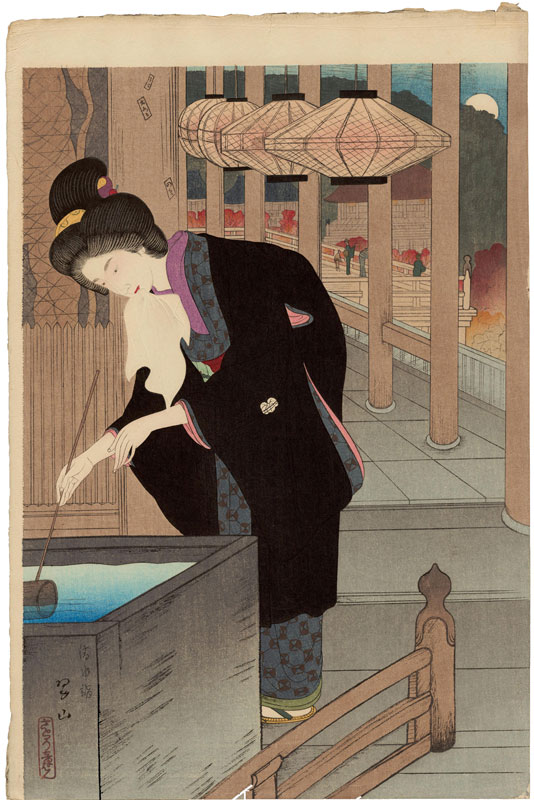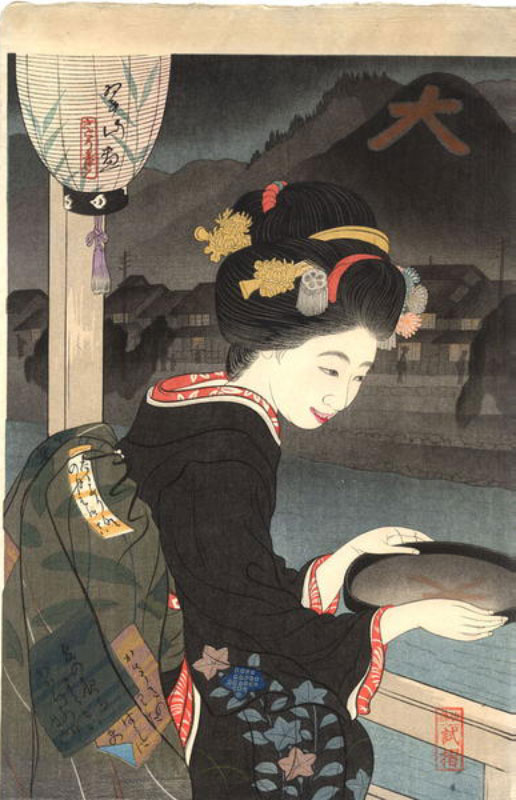Prints in Collection
Biographical Data
Source: Fresh Impressions: Early Modern Japanese Prints, Carol M. Putney, et. al., Toledo Museum of Art, 2014, p. 167 and other sources as noted.
Miki Suizan was born on July 15, 1887 in Kinashi in Hyogo Prefecture, northwest of Osaka. His birth name was Miki Saiichirō and he likely took the gō (artist name) Suizan while studying Japanese-style painting from 1903 to 1913 with the famous Kyoto nihonga painter Takeuchi Seihō (1864-1942). Starting in 1913 he exhibited at the government sponsored exhibitions Bunten and its successors Teiten and Shin-Bunten. At the 13th Teiten in 1932 he was accorded mukansa or non-vetted status, "which was reserved for artists who contributed greatly to contemporary painting over the course of many years, and allowed Suizan to exhibit his work freely at the official exhibitions without the usual application and vetting process."1 He is best known for his paintings of beautiful women, bijinga, in the nihonga style, such as the two works shown below.
Suizan spent the years from 1952 to 1957 in the United States, showing at individual exhibits focusing on bijinga.2
Suizan's work is in the collections of the Tokyo Museum of Modern Art, the Kyoto Museum of Modern Art, the Museum of Fine Arts, Boston, the Toledo Museum of Art, which holds his 14 prints, and other prominent museums. His 1934 Teiten and 1939 Shin-Bunten paintings are in the collection of the National Museum of Korea, and are illustrated in the Kyoto National Museum of Modern Art catalogue, Japanese Modern Art Collection from the National Museum of Korea, numbers 30 and 31.3
While Suizan's fame rests on his paintings, he created fourteen print designs around 1924 for the Kyoto publisher Sato Shōtarō 佐藤 章太郎, who also published works for the artist Yoshikawa Kanpō 吉川観方 (1894-1979). Suizan's fourteen prints for Shōtarō were published in 1924 and 1925 and consist of two series, one made up of eight landscapes (fūkeigai) in horizontal format and known as New Selection of Noted Places of Kyoto, (First Series), the other made up of six portraits of beauties (bijinga) in vertical format and known as New Selection of Noted Places of Kyoto, (Second Series), both in the shin hanga style. Suizan’s designs were carved by Maeda Kentarō (c. 1891-1987) and printed by Ōiwa Tokuzō, employed by Shōtarō. All fourteen of these prints were displayed in the seminal Toledo exhibition in 1930 and are shown below. Two of these prints, Hozu River in Early Summer and Snow at Kinkaku Temple, are part of this collection.
The catalog from the Toledo exhibition mentions that "Suizan has an interesting hobby in the cultivation of chrysanthemums and the collecting of ceramic wares, paintings and beautiful textiles of old Japan,"4 a hobby he would continue until his death on March 25, 1957, at age sixty-nine.
1 Simply Haiku: A Quarterly Journal of Japanese Short Form Poetry Autumn 2007, vol 5 no 3
2 Ibid.
3 Ibid.
4 Modern Japanese Prints, Dorothy Blair, The Toledo Art Museum 1997 (Printed from a photographic reproduction of two exhibition catalogues of modern Japanese prints published by The Toledo Museum of Art in 1930 and 1936)
5 Ibid.
The Artist's Fourteen Prints
New Selection of Noted Places of Kyoto, (First Series)
[Shinsen Kyōto meisho (daiisshū)]
Kiyomizu on a Spring Night
(Haru no yoru no Kiyomizu)
Hozu River in Early Summer
(Shoka no Hozugawa)
IHL Cat. #1015
Snow at Kinkaku Temple
(Kinkakuji no yuki)
IHL Cat. #1014
Spring on Arashiyama
(Haru no Arashiyama)
Cherry Blossoms at Omuro
(Omuro no sakura)
Snowy Dawn over the Imperial Gardens, Kyoto
(Gyoen nai yuki no akatsuki)
Autumn at the Tsūten Bridge
(Tsūtenkyō on oki)
New Selection of Noted Places of Kyoto (Second Series)[Shinsen Kyōto meisho (dainishū)]
(Nijōjō no tsuki)
Visiting Kiyomizu
(Kiyomizu mōde)
The Daimonji Illumination
at Kiya
(Daimonji no youru
no Kiya-chō)
